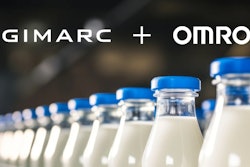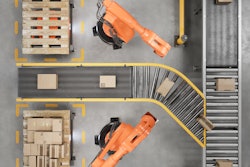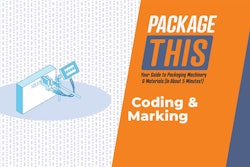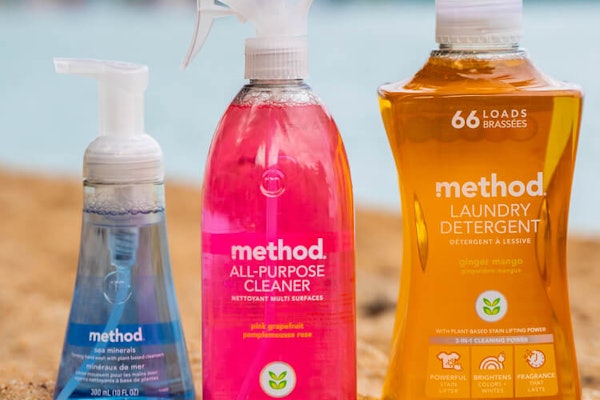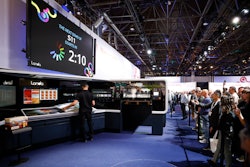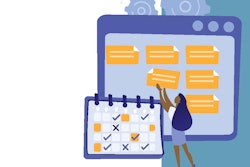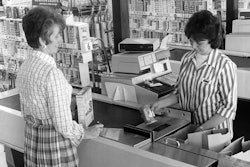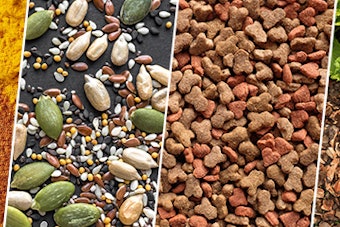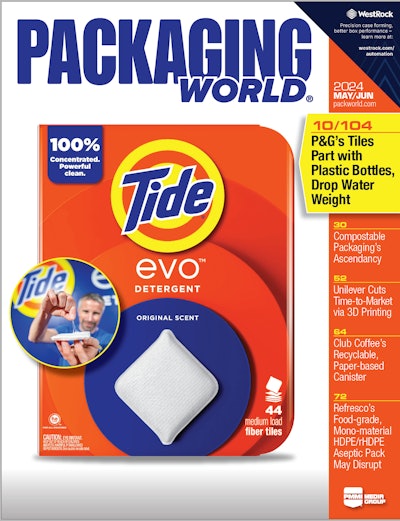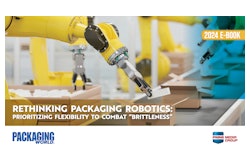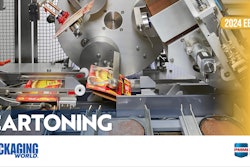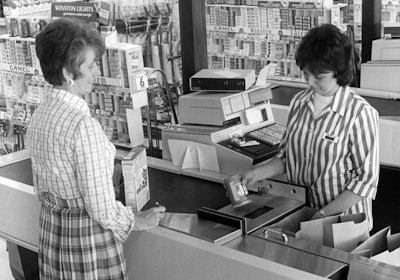
GS1 US, the neutral not-for-profit information standards organization best known as the administrator of Universal Product Code (UPC) barcodes, today commemorates 50 years since the monumental debut of the first barcode scan (“Scanniversary”), marking a pivotal moment in retail history.

While the UPC has endured for 50 years to aid price lookup at point-of-sale (POS), new two-dimensional (2D) barcodes, like QR codes powered by GS1, are emerging on product packaging to provide consumers with detailed product information. A 2024 GS1 US consumer survey showed that 77% of consumers believe that product information is important when making a purchase and 79% of shoppers are more likely to purchase products with a scannable barcode/QR code (via smartphone) that provides the information they want.
Through industrywide collaboration facilitated by GS1, brands globally are beginning their transition from UPCs to new 2D barcodes, or QR codes, on product packaging, and retailers have set a target date to accept them at checkout by 2027 – a GS1 US initiative labeled Sunrise 2027. These GS1 web-enabled barcodes combine the capability and standards of the UPC and QR code to function at cash registers, offer rich product data from the brand that shoppers can access with a simple smartphone scan, and can help power retail inventory management, visibility, and traceability. Additionally, 20 of the world’s biggest companies – including Procter & Gamble (P&G), L’Oreal and Nestlé—have signed a global joint statement calling for the adoption of these next-generation barcodes to revolutionize the consumer experience.
"While we honor the legacy of the iconic UPC barcode over the last half-century, we must support today’s digital world characterized by elevated consumer expectations and increasingly complex supply chains," said Bob Carpenter, president and CEO, GS1 US. "In this dynamic landscape, innovation is flourishing with the growing adoption of new 2D barcodes. These QR codes, powered by GS1, can provide a single gateway to help consumers understand product composition, sustainability efforts and recalls while aiding retailers with inventory control, on-demand discounting, couponing and more. The opportunities to power consumer confidence and connect with brands while also serving the business needs of industry are truly limitless.”
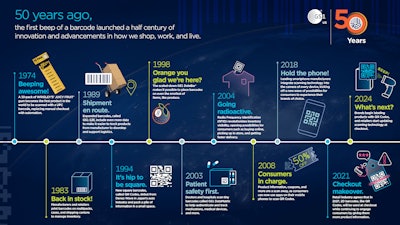
Brands Support the Shift to 2D Barcodes
Brands are ushering in 2D barcodes to offer shoppers deeper product information and enhance inventory management.
"At P&G, we recognize the importance of leveraging cutting-edge technology to meet the demands of today's consumers and safeguard the integrity of our products," expressed Alfredo Colas, senior vice president, information technology, Procter & Gamble. "By transitioning to a 2D barcode with GS1 Standards, we are empowering consumers with greater access to the information they need to inform their purchase decisions and improving traceability through the supply chain. This commitment to innovation underscores our dedication to deliver a superior experience to consumers and value to all stakeholders."
Meri Stevens, chief operations officer of Kenvue said, “The ability to embed details, including serial numbers, batch/lot numbers and expiration dates in a 2D barcode enables vast improvements in traceability and supply chain visibility. Widespread implementation of 2D barcodes is critical to a future with digital leaflets, which we support at Kenvue, in order to enable individuals to make informed decisions about their health and reduce paper use. It will also improve the ability for the industry to efficiently manage inventory while ensuring products are available at the right place and at the right time to meet consumer need.”
“End-to-end supply chain traceability aided by the detailed records that can be embedded in 2D barcodes is especially crucial in the food and healthcare industries,” added Randy Skoda, president and CEO of Topco Associates. “Fast, accurate traceback capability fortifies our ability to ensure food safety and protect consumer health. The additional data capacity can also be used to satisfy increased record-keeping requirements under the U.S. FDA’s Food Safety Modernization Act, Rule 204 (FSMA Rule 204) for certain foods deemed as high risk.”
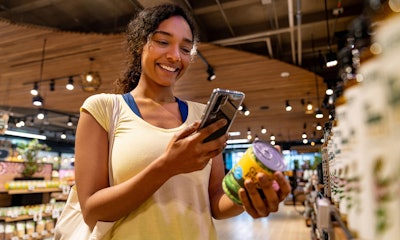
Retailers Plan for Migration and Sunrise 2027
Retailers are also demonstrating their support for 2D barcodes. “In addition to the shopper engagement opportunities that 2D barcodes provide, these data-rich QR codes will also better support our inventory management operations so that we can keep our shelves stocked with the products our customers want most,” said Dave DeLaus, senior vice president and chief information officer, Wegmans Food Markets, Inc. “As an early adopter, we’re prioritizing this industry transition and are pressure-testing our capabilities to ensure readiness.”
“The shift to 2D barcodes will be key to educating consumers in store as they consider products that best meet the needs of their families,” said Dave Bornmann, Publix senior vice president, product business development. “Industry coming together to make this transition while following barcode placement standards will be the gateway to information our shoppers increasingly want at the point of decision.”
“I started out in the supermarket business as a part-time courtesy clerk the year the barcode was introduced and saw first-hand how it improved store efficiency and enhanced the customer experience,” said Mike Stigers, president of Wakefern Food Corp., the largest retailer-owned cooperative with supermarket banners that include ShopRite, Price Rite Marketplace, the Fresh Grocer, Gourmet Garage and Fairway Market. “It’s so exciting to mark 50 years of progress with the ‘Scanniversary’ and, as a GS1 US board member, help guide the industry’s transition to 2D barcodes. The potential to provide so much important product information will continue to help retailers, manufacturers and consumers.”
As a neutral standards body, GS1 US will continue to facilitate industry collaboration on 2D barcode technology and its adoption during the transition and beyond. "The 50th anniversary of the UPC barcode scan serves as a testament to the lasting relevance of GS1 Standards in an ever-evolving marketplace," Carpenter added. "As we embark on the next chapter of barcode innovation, GS1 US remains committed to driving progress and facilitating meaningful advancements that will shape the next 50 years and beyond in retail and supply chain."
For more information about GS1 US, the 50th Scanniversary and Sunrise 2027, please visit gs1us.org/50.
